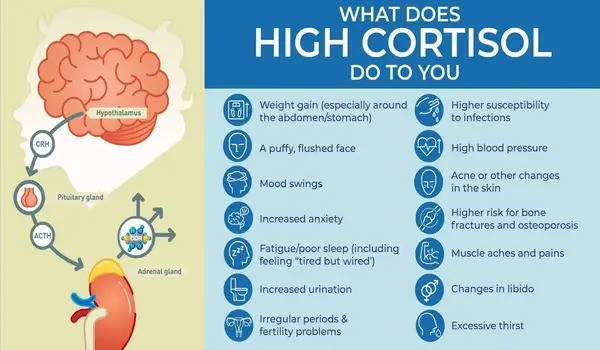Researchers determined in a study of 11-year-olds that higher hair cortisol levels are associated with more behavioral difficulties. The researchers also concluded that exposure to certain variables that can produce chronic stress may influence the levels of cortisol in the hair.
Cortisol is a hormone generated by the body in response to stressful conditions, hence testing cortisol levels in the hair is quite valuable in analyzing chronic stress. “Cortisol is usually present in the blood, saliva, and urine, among other places, and indicates a momentary level of cortisol; however, cortisol accumulates in the hair, and that points to a degree of stress in the longer term, in other words, chronic stress,” explained Ane Arregi-Otxotorena, a researcher in the UPV/EHU’s Faculty of Psychology.
To distinguish between momentary stress and chronic stress, Arregi uses a clear example: “The stress that occurs when you’re going to buy bread one day and you realize you haven’t got any money on you, is not the same as when you know you can’t afford to buy bread on a daily basis.”
Cortisol is usually present in the blood, saliva, and urine, among other places, and indicates a momentary level of cortisol; however, cortisol accumulates in the hair, and that points to a degree of stress in the longer term, in other words, chronic stress.
Ane Arregi-Otxotorena
The researcher from the Basque Environmental Health Research Group (B-EHRG) assessed chronic stress using hair samples from 11-year-old youngsters. To perform the research, she obtained data from the INMA project. The INMA (Environment and Childhood) project collects a wide range of data on children and families, beginning with the mother’s pregnancy, for long-term research.
The study showed that, first and foremost, higher levels of cortisol in the hair are associated with serious behavioral disorders. Furthermore, “we discovered that maternal stress is associated to children’s behavioral difficulties. This suggests that maternal stress can affect children’s cortisol levels through behavioural issues. “Somehow along this two-stage path,” Arregi said.
Cortisol level is also influenced by environmental noise
Second, they discovered something unexpected: “Increased exposure to environmental noise is associated with lower cortisol levels.” We found that the higher the noise level, the lower the cortisol levels. When the study was divided by gender, this association was exclusively significant in the case of boys.” According to the study authors, “the initial acute stress caused by noise may lead to a temporary increase in cortisol levels, but the chronic stress caused by long-term exposure to high noise levels can reduce the level of cortisol.” To corroborate the surprising noise results, the same research will be conducted as part of the larger European Athlete (Horizon 2020) project.

Environmental, social and individual factors
In its broadest sense, “in our research we detected these two factors, but that does not mean that other factors are not related, but we did not find any other kind of relationship,” according to Arregi. “It is important to give these pieces of research a broader perspective while taking more than one stressful factor into account.” So a model was developed to study the association between environmental, social, and individual factors and cortisol levels in children’s hair. All elements that may influence stress that present in the literature were considered, including green and blue spaces, air pollution, ambient noise, family and school interactions, parental stress level, sleep issues, physical activity, age, and gender.
As the UPV/EHU researcher pointed out, “much remains to be investigated relating to the factors that influence hair cortisol levels in children and young people, and studies so far have not taken into account the simultaneous influence of many factors.” The model was created to tackle this. Arregi explained that in the model it is important to take many factors into consideration: “From now on, the model will allow us to find out which variables should be taken into account when measuring the cortisol level in the hair and which should not.”
Future research should take a more sophisticated approach to better understand the drivers of cortisol in children’s hair; certainly, simultaneous exposure to a variety of environmental, social, and individual factors may influence cortisol concentration in the hair. Chronic stress in children has been linked to a variety of health issues; “childhood and adolescence are extremely sensitive times due to their fast development. The researcher stated that it is critical to understand how various factors influence the health of children and adolescents at this age in order for them to grow into healthy adults.
“We believe that hair cortisol may be a useful tool when assessing how environmental exposures impact chronic stress. In short, this may help in the deployment of effective public policies; in fact, knowing what can cause the chronic stress of the population in a specific location may make it easier to implement policies to prevent it,” she concluded.
















